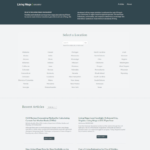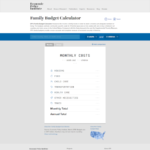Originally posted: May 11, 2020
Last updated: September 21, 2023
Section 4, the core of the library, includes tools designed to address specific components of job quality. Once organizations have determined their job quality priorities, they can turn to these tools to shift practices in the areas they have deemed most urgent, either in their own organizations or in the businesses with which they partner.
We’ve organized tools into categories that reflect the job quality attributes most commonly cited across the job quality frameworks and definitions included in Section 1. These attributes include wages, benefits, scheduling, legal rights, equity and inclusion, opportunity to build skills and advance, supportive work environment, worker voice, and employee ownership. Each attribute also includes sub-categories for ease of navigation.
↓ Tools and Resources Below the Box ↓
Library Navigation
- Job Quality Tools Library Homepage
- About This Library
- Section 1: Understanding Job Quality
- Section 2: Assessing Job Quality
- Section 3: Engaging Businesses on Job Quality
- Section 4: Strengthening Practices to Improve Job Quality
- Section 5: Monitoring Improvements in Job Quality
- Special: COVID-19 Response Tools and Resources
- Index of Tools by Field
Living Wage Calculators

Massachusetts Institute of Technology – Living Wage Calculator
Who’s It For: Employers, Economic Development, Investing and Lending, Policy, Worker Advocacy, Workforce Development
What’s It For: This calculator is a tool for estimating the living wage by U.S. metro area, county, state, region, or at the national level. The living wage is defined as the wage needed to cover basic family expenses including housing, food, childcare, transportation, health, and other necessities, plus relevant taxes. The calculator estimates the living wage needed to support families of 12 different compositions (one to two adults with up to three children). Practitioners across fields can use this tool to benchmark compensation in local communities or firms against a wage rate that allows residents to meet minimum standards of living. Because the Massachusetts Institute of Technology is a nonpartisan research institution, practitioners report that this tool has credibility with a range of audiences including businesses.

Economic Policy Institute – Family Budget Calculator
Who’s It For: Employers, Economic Development, Investing and Lending, Policy, Worker Advocacy, Workforce Development
What’s It For: This simple, user-friendly calculator serves as a tool to measure the income needed by a family to maintain an adequate standard of living in a specific community. It can calculate costs based on all counties and metro areas in the US and for 10 family types (one or two adults with zero to four children). Family budgets are calculated using seven components: housing, food, transportation, childcare, healthcare, taxes, and “other necessities.”

Institute for Women’s Policy Research – The Economic Security Database
Who’s It For: Employers, Workforce Development
What’s It For: These two indexes measure the true cost of living across different family sizes and in different localities in the United States. The BEST Index is a budget standard that can be adjusted for the needs of more than 400 family types, and the Elder Index measures the income that older adults need to age in place with dignity.
Benefits Cliff Calculators

Urban Institute – Net Income Change Calculator
Who’s It For: Employers, Economic Development, Investing and Lending, Policy, Worker Advocacy, Workforce Development
What’s It For: This calculator can help a provider or individual assess how a family’s change in income could affect public benefits from safety net programs (also known as the “benefits cliff”). This tool allows users to test scenarios at different earning levels and show results for all U.S. states. Businesses and their partners might use this tool as they consider the appropriate wage and benefits mix to enhance job quality and ensure economic stability for all workers.